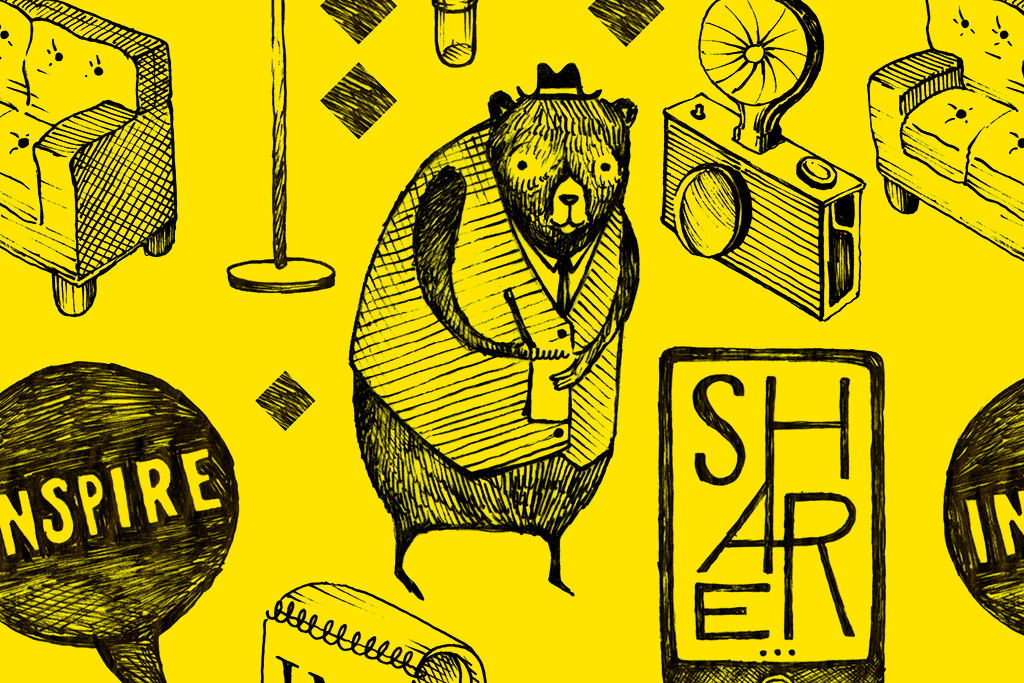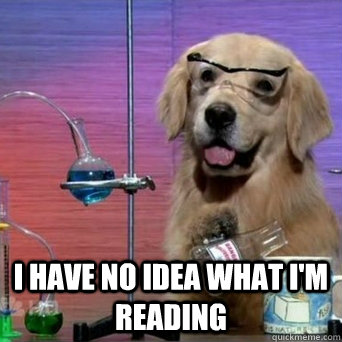Everything We Learned At This Year’s Storyology
Digital is the future. You can't hide from it.

Last week, the caffeine-fuelled Australian media summit that is The Walkley Foundation’s Storyology wrapped up four days of intense discussions about the future of journalism; essentially, it boiled down to how to make a living in a rapidly evolving, increasingly technological media-world.
Global industry leaders from Buzzfeed US (Ben Smith), Al Jazeera (Femi Oke), the Wall Street Journal (Neal Mann) and The Guardian (Aron Pilhofer) — as well as from international news start-ups like the Texas Tribune (Emily Ramshaw) and the Rappler (Maria Ressa) — came to Sydney to impart their wisdom.
Cue a bit of this, from all media students everywhere:

Besides being able to stand too close to some incredibly intelligent and interesting people, what relevance did the conference have for you?
Andy Huang and Hattie O’Donnell highlight the best lessons from this year’s Storyology.
–
#1: Find Your Niche
It’s never been a more thrilling (and perhaps troubling) time for freelancers, creatives and entrepreneurs: there are more opportunities than ever to experiment, and more platforms to get your stuff out there and reach a wider, global audience — oh, and there’s a whole heap of new ways to fail, too. The projects that do take off are created by people who can see what’s missing in the market, and fill that gap. Broadsheet, an online start-up that publishes local city guides, seems to be killing it right now.
Broadsheet began with founder and publisher Nick Shelton spending his twenties abroad, and in near-constant search for local watering holes. The online and print world was severely lacking in timely, detailed, quality and youth-oriented content. Enter Broadsheet, which in five years has gone from the passion project of one guy with a laptop, to a growing operation with offices in Sydney and Melbourne that attracts over 600 000 eyeballs per month.
LESSON:
The key here is specialisation. Find something you’re good at that you’re interested in that no one’s doing, and do it well. Become an expert; be the thing people go to for information. Find a gap, figure out how you can fill it, be flexible, and do your research. Understand your target market, have a clear (and achievable) vision, and learn from others’ mistakes.

–
#2: Rethink. Redesign. Repackage.
What’s the first thing you do when you wake up? Fumble for your phone? Scroll through your Facebook or Twitter newsfeed?
Social media has had by far the biggest influence on how content (yes, there was a lot of that word) is consumed and produced today. And the greatest competition isn’t between print or digital. It’s not between different media outlets and publishers either. It’s competition for people’s time.
“We’re an attention economy,” said Neal Mann from Wall Street Journal, in his keynote address on media innovation. “A journalist’s problem is their own thinking.” Or, as Aron Pilhofer from Guardian Digital said, “Part of the problem is us.”
The problem is newspapers still making newspaper-shaped things for the digital space; the problem is stuff made for TV, being distributed the same way online, which just doesn’t work. The point here is to adapt the way your product is delivered, in a way that best suits what you’ve made.
This is how John Oliver wins the internet every time.
Notice how there isn’t an intro and sign-off like what you’d see in a traditional TV news broadcast? See how he launches straight into the segment? Hear how he talks faster than the old school anchors do?
Web is a different medium. Adjust accordingly.
LESSON:
Social media is being driven primarily by mobile, and those catching on are moving towards a mobile-first approach. This begs the question: how do you make content more engaging for audiences on their phones?
Look outside the industry. Look to Tinder. (Yes. Tinder.)
Hey mum, look at what we're learning about at this journalism conference #Storyology @walkleys pic.twitter.com/BQJNyQAE5h
— Juliette Saly (@julesaly) December 1, 2014
In the same way that Tinder does dating for your phone, how about journalism that’s designed specifically for mobile? AJ+ and Circa (its motto: Save time. Stay informed.) are breaking down information into smaller, more digestible bites — and so far, it seems to be working for them.

–
#3: What Even Is Native Advertising?
Or content marketing? Or branded journalism?
Whatever you call it, it’s not going anywhere: it was one of the most talked about — rather heatedly so — topics at Storyology.
Depending on who you ask, native content — which is part of this website’s commercial model — is either pure evil or the greatest thing to have ever happened. It’s kinda like if advertorial and editorial got married and made this weird baby-thing that nobody really knows how they should feel about.

Basically, content marketing is the umbrella term, which can refer to when brands become their own publishers (Telstra’s In:Sight platform; aka, “branded journalism”), or when brands approach other publishers to create content inspired by the brand and delivered in stream (Buzzfeed, Pedestrian, and even this very publication; aka, “native content”). Unlike advertorial, the content doesn’t mention the brand; at its best, it’s as good as any other piece you’d find at the publication, but representative of the brand’s message and clearly marked as such.
Native ad content @junkeedotcom style – inspired by the brand, brought to you by the brand but not about the brand #Storyology
— Kaitlyn Sawrey (@KaitSaw) December 1, 2014
Advertisers are happy to pay for this, because they want to engage audiences in a more meaningful way than just thrusting a banner ad in front of them. For publishers like Junkee, this adds another revenue stream, which they can use to fund the editorial-driven stories that hold great value for the publication, its writers, and for the audience.
Okay, yes, you’re still being sold something; sometimes without you even being aware of it. In India, for example, native advertising has become so entrenched that it goes unnoticed and has pretty much corrupted news media organisations, where journalistic integrity is compromised by commercial interests. That’s why Newslaundry flat-out refuses to use native advertising.
The native content model has been mostly successful in the US and the UK (it’s used by The New York Times, The Guardian, Slate, The Atlantic, Buzzfeed and more) — and, as Media Watch noted anxiously in April, it’s starting to take off in Australia too.
LESSON:
As political watchdogs and purveyors of truth, the core mission of journalists is to act in the public interest. Content marketing is problematic for some journalists because the term implies it serves the good of the brand, rather than the public.
That said, in some instances, the stakes are lower than others, and the money from a clearly-marked native content piece can help fund the writers that are otherwise struggling to get paid in the digital world. Also, when you think about it, almost all journalism is commercial: advertisers pay publishers, publishers pay writers — the money needs to come from somewhere. Thirdly, native content has to be clearly marked and done well in order to work — meaning it’s often quality content that wouldn’t otherwise have existed.
So, best advice? If you have an ethical dilemma about reading/writing/publishing branded content, don’t do it. A hot tip from Jeanne-Vida Douglas, editorial director at Filtered Media: “Love your audience.” They’re smart, savvy people; c’mon give them some credit. Trust that they’re intelligent enough to judge native content from editorial — and savvy enough to give it the thumbs down if it’s bad.
–
#4: Changing Cultures, Changing Perspectives
SBS and NITV’s new series First Contact brought to the fore much discussion about the representation and treatment of Indigenous Australians. What roles and responsibilities do we have in telling Indigenous stories?
While First Contact meant well, it nonetheless continued what Wesley Enoch from Queensland Theatre Company describes as the “crisis” narrative, which focuses on “what’s wrong” with Indigenous culture — when there’s a whole set of positive narratives that continue to be sidelined by the mainstream media.
Wesley Enoch @qldtheatreco – if you can understand the stories of people, you can no longer oppress them #storyology pic.twitter.com/4uz3vLZwP4
— Belinda Quinn (@BelindaQuinn10) December 4, 2014
LESSON:
Don’t buy into the mainstream; look for the alternative. Instead of focusing on the ‘problems’, shift the narrative to what we can learn from Indigenous culture: their knowledge of the land and how they approach the environment to deal with climate change; their recognition of the significance of art, and its contribution to society and culture. Also, when it comes to representing Indigenous perspectives and really changing the narrative, make sure to constantly consult.
Women had a particularly strong presence at Storyology this year, including amazing babes Malarndirri McCarthy (NITV), Sarah Ferguson (ABC), and Maria Ressa (Rappler). There was a particularly great panel on the treatment and participation of women online (affectionately dubbed ‘molls vs. trolls’) with Tara Moss, Madhu Trehan and (the forever sassy) Jane Caro. The liberating feeling of speaking openly to a global audience comes withe serious risks – and though it’s easy to have a ‘h8rs gonna h8’ attitude, violent and criminal threats are nothing to be blasé about.
Online harassment is not okay. Not for women, not for men, not for anyone. As Caro said, “We’re living in a culture of intimidation”.
Trolls are lurking for engagement, and for a reaction. If someone is giving you serious beef, block them. There’s a time and place for intelligent debate, and Twitter has a reputation for often descending into a chaotic match of mud-slinging, so it’s important to know your boundaries and step away when you need to.
BONUS LESSON:
Jane Caro says drunk-tweeting is okay!
–
#5: Data Is Your Friend
Find stats confusing and/or traumatising? Chances are there’s a whole lot of people out there who are confuddled too. Maybe even more so than you.

That’s why learning how to read patterns and understand trends is super useful. Great journalism — and storytelling — can be about finding the meaning behind facts and numbers and other mind boggling data, and organising and presenting it in a way that makes sense. Data mapping can be a fantastic way to harness your potential in the current media landscape, as Maria Ressa from the Rappler has shown with Project AGOS: a crowd-sourced weather alert system that has saved lives:
–
@maria_ressa:This is what a crisis looks like mapped from social media pic.twitter.com/X2lFzV4zKJ
— Kevin Davis (@KLJDavis) December 2, 2014
Another “scrappy” start-up that’s making some major waves over in the States is the Texas Tribune, a non-partisan, non-profit media organisation. Launched in 2009, their focus is on traditional beat reporting but as a digital outlet, their game — and edge — comes from data-driven journalism. For the Trib, data is journalism.
Loved @eramshaw ‘s description of veggies wrapped in chocolate to describe how to engage readers with content that matters. #Storyology — Marina Go (@marinasgo) December 1, 2014
LESSON:
Be creative and think about how you can break a topic down and churn it out in a way that’s useful. For example, instead of a wordy explainer article about health insurance, how about a choose-your-own-adventure-type game? Or instead of a lengthy summary about the impact of fracking, what about an interactive map?
Pretty AND useful.
–
TL;DR: Find your niche. Work out the best form for your package. Times they are a’changin’. Data is cool. Understand what native advertising is, and judge it accordingly. Learn the things, use your head, conquer the world.
–
Andy Huang is a past intern at Junkee, who studies Communication at UTS and makes radio at 2SER on Saturdays.
Hattie O’Donnell edited UTS’ Vertigo Magazine this year, and tweets from @hattieod